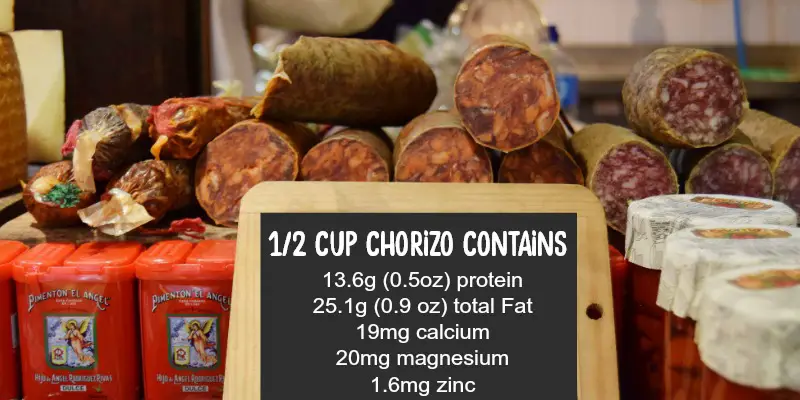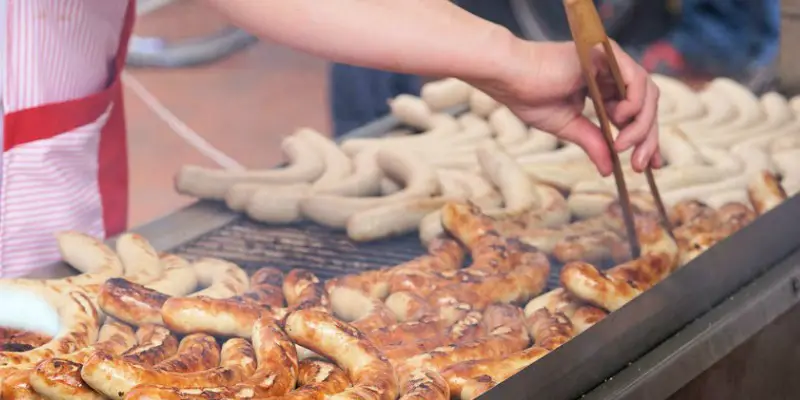The deeply satisfying taste and texture of sausage meat is hard to beat. We reach for that freshly grilled Bratwurst to place upon a bun beside some chips at the local block party. Or maybe we grab a banger out of the pan to slather in maple syrup. The perfect side-dish to pancakes! Any way we prepare them, sausages are simply hard to resist.
After finishing a meal of sausages it’s common to feel guilty. Is there good reason for this feeling or has society become obsessed with foods that aren’t actually that bad?
Let’s start straight off by stating that sausages are no health food. We would never endorse heavy consumption of this protein.
That being said, with roots that date back to the Ancient Sumerian times, sausage making has been a popular food choice for centuries. They were traditionally made of various types of ground meat with a casing around it. Sausage making was created as a way to use up all the bits and pieces to avoid food wastage.
With such a long history of eating sausages, did our predecessors have it wrong? Or is sausage healthy to eat? We’ll take a closer look at this question in the article.
Are we too obsessed with the numbers?
In our modern tech savvy culture, we track every step we take and monitor every morsel we consume. The physical health of our bodies is hugely important to many of us, like a temple of ancient origins. Those on a healthy eating regime shy away from foods that may be harmful to their bodies, even in small quantities. Often, we deny ourselves the pleasure of enjoying delicious food in moderation. The sole focus is on the nutritional label.
Is it possible for the notorious sausage to fit into a healthy modern diet? Absolutely!
Nutritional elements in sausage
Sausages contain an assortment of vitamins and minerals that are part of maintaining a healthy diet. According to USDA Guidelines a ½ cup of Chorizo sausage contains 13.6 grams of protein, 25.1 grams of Total Fat, 19 mg of Calcium, 1.41 mg of Iron, 20 mg of Magnesium, 308 mg of Potassium, 1.6 mg of Zinc, 5.4 mg of Niacin, 788 mg of Sodium as well as other vitamins and minerals in lesser quantities.

The nutritional panel isn’t all bad for sausage.
With no sugar or carbohydrates, they make a good choice for a person with Diabetes or other health restrictions. No matter what diet you follow, a sausage of some type can fit into your daily meals, when eaten in moderation.
Varieties are endless, from Bratwurst, Chorizo, Andouille, Kielbasa and Italian, and the famous breakfast link, to name just a few. But while sausage does have health benefits, it also can have a down side. Fat and salt.
Analyzing the fat monster
Fat is common in most types of sausage and is a contributing cause of many health complications. These include heart disease, stroke, obesity and a variety of other diseases. But is it necessary to cut fat out of our diet?
Dietary fat should not be consumed in large amounts on a daily basis. The problem is, we love eating the stuff. Many almost crave it and eat too much! Is it possible to find a balance? The answer is a resounding yes.
According to the 2015-2020 Dietary Guidelines for Americans, we are encouraged to include fats in a healthy eating plan. For adults on a 2000 calorie a day diet we can consume up to 35% of our total calories from fat. This would be the equivalent of 700 calories, or 78 grams of fat per day. At 17 grams of fat for a 4” link of smoked beef or pork Bratwurst that amounts to about 1 quarter of your daily fat intake.
Salty sausage anyone?
Salt is another story. With dietary guidelines for adults on a 2,000 calorie a day diet, you can consume 6 grams of salt per day. The equivalent of 2,400 mg or just over 1 teaspoon per day. This can be harder to remedy when you consider that a ½ cup of low fat cottage cheese contains 255 mg and a 6-inch whole wheat pita has 284 mg.
But don’t give up hope yet, limiting the fat and salt in your diet, as well as your sausage couldn’t be easier.
How to cook a healthier sausage
Alternative cooking methods can work wonders to reduce the amount of fat and salt. Instead of the grilling or pan frying, try microwaving, oven baking in or even blanching them. If you choose to pan fry, use cooking spray instead of butter or oil to cook them in.

Consider a sausage casserole instead of frying.
If you happen to make your own sausages you can add finely chopped vegetables, fruit, ground nuts, grains, herbs and spices. This will reduce the amount of meat and increase the healthier components. You’ll not only reduce the amount of fat in each sausage but offer alternative flavor choices to enhance your dining experience.
Experimentation is best for finding the right balance.
You can also alter the type of meat you use in your homemade sausages: beef, pork, veal, chicken. Maybe the occasional vegan sausage thrown in?
Choosing lean meats like chicken, turkey or even tofu can reduce the fat content of each sausage considerably. Stuff beans into a casing for an alternative vegetarian option that tastes amazing and is full of healthy nutrients.

Sides of chips drive up the salt and saturated fat.
When cooking, consider changing up the side dishes on offer. Instead of potato chips, macaroni salad or French fries on the side of a grilled sausage, serve it on a skewer with vegetables. Skip the bun entirely and add a low-fat dipping sauce to compliment.
Conclusion
While sausage may be the good, bad and sometimes the ugly of healthy options, we must remember the choices are in our hands. What we select, how we prepare it, and how much we eat of it, are the best solutions to satisfying our palette and keeping our bodies healthy.
Making your own sausage is an excellent strategy for controlling the nutritional elements. By grinding your own meat you can make a 90:10 meat to fat ratio for a lovely lean sausage. This is a much better option that buying the cheap, fatty sausages at your local store.
With a little moderation, we should be able to follow in our ancestor’s footsteps and enjoy sausages without becoming overwhelmed by guilt. The next time you think of preparing a picnic, dinner party or your family meal, don’t overlook sausages. Make them the star and tailor the rest of the meal around it, wisely. Ancient civilizations and cultures around the world couldn’t be wrong.



Leave A Comment